The history of the development of the radar begins from the early days of the study of electromagnetic radiation. Contrary to popular myth, the British did not invent the radar. It was the Germans who carried out the most advanced research - but failed to understand its significance
By: Roni Lifshitz
The article was published on the website tech times and is published on the Hedaan website courtesy of the author and the magazine system
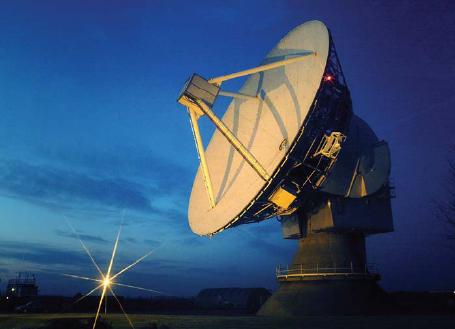
Despite the importance and wide distribution of the radar in civilian and military applications, the history of its development is almost unknown. In the general public, the invention of the radar is attributed to the British in World War II. According to the myth, only science and the British scientist Robert Watson-Watt stood between them and defeat during the bomber attack of Nazi Germany at the beginning of World War II.
The reality was different: although the radar had a decisive influence on the results of that war, the Germans, French, Americans, Russians and even the Hungarians also began developing surprising radar systems in the years leading up to World War II. In practice, the history of radar is almost as long as the history of radio waves themselves.
Maxwell's hypothesis
Already in the second half of the 19th century, the physicist James Maxwell estimated that electromagnetic radiation, like light radiation, can be reflected by various ovites. In 1887, the German physicist Heinrich Hertz performed an experiment that proved Maxwell's hypothesis.
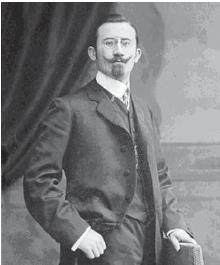
The first patent for the radar was actually registered in Germany, by Christian Hellsmeier. On June 9, 1904, the 22-year-old scientist installed a revolutionary demonstration system called the Telemobiloskop on board the Dutch merchant ship Columbus in the port of Rotterdam. The system was designed to prevent ships from colliding, and was based on the transmission and reception of radio signals (then they were called "Hertz waves"). She was able to activate an electromechanical switch with the detection of disturbances in the received signal, which are created by a heavy metallic body (such as a ship).
This initial system did not know how to identify the distance of the object and the direction of its movement. Managers of large shipping companies from Great Britain, Holland and Germany who were invited to the demonstration were not impressed by it, and the first attempt to commercialize the Nahal radar was a failure. Haselmeyer abandoned the field and established a factory for the production of mechanical equipment for water and steam systems. During the Nazi regime, the Salameyer was considered a hostile citizen and his passport was revoked. It was only after the war that he regained his German citizenship, and in 1948 he was recognized as the first to invent a device, from which in the future the radar would develop.
Tesla's equation
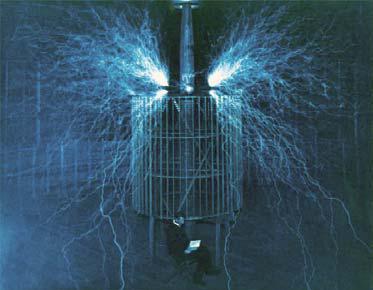
But from here to a modern radar the road was long. One of the first important breakthroughs is attributed to Nikola Tesla, the extraordinary Croatian-American inventor. Tesla was born in 1856 in the town of Semilian, then in the Austro-Hungarian Empire and now in Croatia. He studied electrical engineering in the Austrian city of Graz and in Prague, and in 1881 he moved to Budapest to set up the first telephone exchange in Hungary for the local telephone company.
In 1882 he joined the Parisian branch of the Edison company, and 3 years later he began working in Edison's central laboratory in the USA. However, the relationship between the two inventors was short-lived and stormy. Tesla, who studied alternating current, concluded that it was more efficient for distributing electricity than direct current, which Edison focused on. The two separated, and it opened "The war of the currents” on the question of how the electricity will be produced and distributed. After Tesla invented an AC electric motor, and the first AC power plant was built by Westinghouse in Niagara Falls, the battle was decided in his favor.
Tesla developed wireless transmission technology, a multiphase motor, a remote control system for steering ships, a tube for producing X-rays, energy transfer technology in magnetic fields, and in his day even a device that was supposed to launch death rays to shoot down airplanes. In 1917, as part of his research on wireless radiation, he developed the initial version of the radar equation, which makes it possible to calculate the frequencies and power of a primitive radar.
Short wave competition
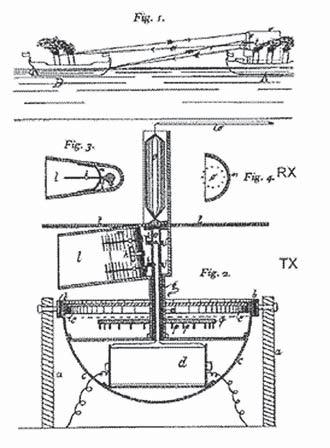
The Tesla equation served as the opening shot of an electronic arms race in which the great powers: USA, Germany, France and Great Britain participated, with the aim of being the first to develop a working radar system. However, to achieve effective resolutions, they were required to develop very short wave transmission technology.
"This is the most valuable cargo ever brought to our shores," wrote an American historian who described after the war the bringing of the magnetron tube to the US under a great shroud of secrecy. The tube was invented in Britain in 1940, brought to the US for mass production and then installed in all Allied radar systems during the war.
The main difficulty in producing radar systems was due to the limitations of the radio tube in producing strong high frequency signals. At frequencies above 100 MHz, the time period in which the electrons pass from the anode to the cathode inside the tube became significant and prevented a transition to high frequencies. An attempt to produce smaller, high-power tubes did not help overcome the hurdle: the high heat melted the electrodes.
from the magnetron revolution
In 1920, engineer Albert Wallace (Hull) of General Electric registered a patent for a tube called the Magnetron. Its uniqueness was based on a new structure of anode and cathode, and the ability to focus the electron beam inside the tube using a magnetic field that is created outside the tube. Although it was developed for the purpose of producing high communication frequencies, immediately after the publication of the patent, scientists from Japan and Germany used it to produce very fast oscillators for other applications.
The most rapid progress was made in Germany. Dr. Hans Eric Hallmann (Hallmann), born in 1899, returned to Germany in 1920 after spending several years in a French POW camp, and began researching subjects related to the ionosphere, radio telescope and short waves at the Heinrich Hertz Institute in Berlin. Holman was interested in the subject of very short waves (microwave), especially for communication applications, and published in 1935 an article about the physics of very short waves, which was eagerly read all over the world. In 1934 he developed a basic radar system, based on an improved magnetron developed in the company he founded, GEMA, which produced waves 50 cm long.
German radar
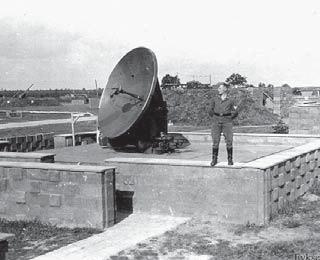
Already in 1934, the company produced the first prototype of a commercial radar, which located a warship from a distance of 10 km. In 1935, the company produced the Seetakt marine radar, and the Freya aerial radar. However, under pressure from the German Air Force, these systems worked at a wavelength of about 80 cm, in order to extend their detection distance. This decision had a major impact on World War II, which broke out in 1939. The German radar systems were less accurate than the American and British systems, and until the last days of the war, the Germans did not manage to install airborne radar systems with a level of accuracy comparable to the Allies'.
On the eve of the invasion of Normandy, the Germans deployed a network of modern Wurzburg type radar systems to direct anti-aircraft guns. They operated at a frequency of 560 MHz, and could locate aircraft from a distance of 100 km and with an accuracy of 100 meters. But it was too late. The German focus on radar for anti-aircraft purposes delayed the development of the use of airborne radar for attack purposes.
During the war Holman was appointed in charge of the scientific research institutes in the Nazi occupation zones. After the war, he was banned from working in the microwave field for several years, until he was invited to do development work for the US government.
Lightning research and radar development in the UK
Meanwhile, the British also made a significant breakthrough, although more applied than technological, under the leadership of Sir Robert Watson-Watt. The Scottish scientist, born in 1892, was asked in 1915 by the British Meteorological Office to develop a system for locating the location of lightning storms using radio waves. Within 20 years, many goals of the project were achieved: Watson-Watt and his team built a system of antennas that received radio waves from telegrams and presented the result graphically using a cathode ray tube.
In 1935 he was asked to test the feasibility of an electromagnetic "death ray", which would destroy enemy planes from a distance. Watt ruled out the possibility, but in a memo he sent to the Air Ministry that year, he explained that a metallic body such as an enemy plane transmits repeated radio signals when it is "illuminated" with radio radiation 50 meters long. The radiation makes it possible to identify it with an accuracy of several tens of kilometers.
Watt proposed to transmit the signals in short pulses, to calculate the distance of the plane, and to use several receiving antennas at the same time in order to improve the calculation of the accuracy of the position. The British Ministry of Defense, which began to fear the power of Germany, asked him to start building a network of radar antennas along the coast in front of Europe.
In 1937, the Chain Home project began and the first three transmission and reception stations were built. By the beginning of the war, 20 stations were completed, and by the end, 50 stations had been built. Despite the British technological inferiority in relation to the German radar, when World War II broke out and the German Air Force began depth bombing of Britain, the system proved extraordinary efficiency and durability.
The towers that won the Battle of Britain
The system was built from two main components, metal poles 110 meters high, which were connected by long cables and "flooded" the sky with radio radiation at a frequency of 20-30 MHz. Beside them, receiving stations operated from wooden huts and interpreted the signal returns received by two-way antennas placed on wooden poles at a height of 73 meters.
The system was simple and fault-tolerant. It detected enemy planes from a distance of about 120 miles, but required great skill in its operation. In addition, the receiving antennas were bi-directional and the technicians had to determine based on their assessment and experience what was the general direction from which the alert was coming.
However, despite its shortcomings, the system was able to locate most of the attacks of the German Air Force, and send interception planes to them. Her disadvantage, by the way, was also her advantage. German radar technology was so advanced compared to British technology that the Germans did not believe that the network of towers along the coast was a large radar system. They were convinced that it was used as a communication system for the British Navy and therefore did not even try to destroy the large and prominent radar system.
The device that changed the face of radar
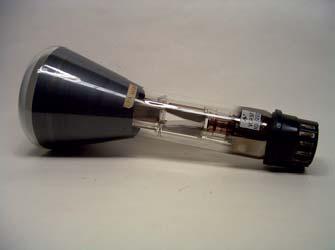
The Chain Home system had a low level of accuracy, did not work well at night and required a large-scale array of stations operating at high power. In 1940, John Tartan Randall and Harry Boot from the University of Birmingham developed the signal generator that changed World War II: the Cavity Magnetron. The frequency generator developed on the basis of Hull's magnetron was a tiny device, carried in the palm of the hand, that produced electromagnetic waves only 10 centimeters long and of high power.
In September 1940, 12 copies of the revolutionary magnetron were brought to the USA. The knowledge brought with them was used to start one of the largest research and development projects in the war, with the participation of 775 universities in the United States, under the supervision of the scientific and technological advisor of the US President Winnipeg Bush. The results of the project were felt on all battlefields. For the first time it was possible to supply small and efficient radar systems to fighter planes and night bombers, to gun batteries, to the fleet of ships and even to install them on cruise missiles. The first phase of the radar project has been completed: the imaginative concept has been proven as a practical technology.
Electronic bat against ships
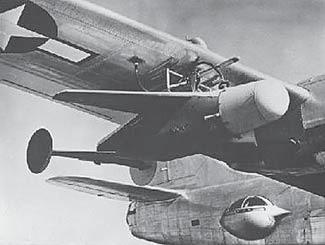
As soon as the radar came into widespread use for detection and warning purposes, the first attempts to develop radar-based weapon systems began. These efforts culminated in the development of a radar-guided cruise missile in the US called the Bat, which came into use only at the end of the war, in May 1945. Until the end of the war, it was used to sink a number of Japanese destroyers off the coast of Borneo and to sink a submarine that was above the surface of the water near the coast of Japan.
The bat was a small plane with a fixed wing and a propeller driven by an electric motor. It was carried under the wing of a bomber or naval patrol plane, and was released from the air carrying a 454 kg warhead at a speed of 300 miles per hour. A radar device was installed in its bow, and an automatic mechanism for navigating the missile to the target that the radar detected. Usually, the bomber launched the bat from 15-20 miles from the target.
The bat was born out of the "Dragon" program, which was proposed by the RCA company in January 1941. The intention was to develop a flying torpedo that adjusts to naval targets using a television camera. When the development of the aerodynamic structure of the torpedo was completed, the German submarines in the Atlantic Ocean became the main threat to the American war effort, and it was decided to convert it to the Pelican system: an anti-submarine cruise bomb that was equipped with a depth charge and was designed to operate through a semi-automatic navigation system, in which the radar itself is inside a plane, from which the navigation commands are manually sent to the missile.
In the middle of 1943, the goals of the project were changed again, and it was defined as an anti-ship radar-carrying missile. In July 1944, only two bombs out of four hit target ships near New York Harbor, and the project was canceled. Immediately after the cancellation, the Ordnance Office of the US Navy began developing the Bat, in collaboration with the Massachusetts Institute of Technology, based on the knowledge gained in the Dragon and Pelican projects.
By the end of the war, several thousand bats were produced, which were equipped with radar systems manufactured by Western Electric. Some of them were even used to attack and destroy bridges used by the Japanese army in Burma.
The Russian radar: a disastrous purge
On a particularly clear and frosty night in March 1932, an unusual experiment was carried out in the USSR. The Red Army examined the possibility of defending against enemy planes, and developed a system that locates them, assesses their location and directs anti-aircraft guns at them. But the experiment failed miserably: the system detected only 50% of the "attacks", and that too only under perfect conditions. The reason for this was technological. The Proehzvuk system was an acoustic system: it was based on amplifying the engine noise of the approaching plane, locating the source of the noise and directing a powerful searchlight and anti-aircraft guns to the approximate location of the plane.
Following the failure, the Central Artillery Administration (GAU), the main development body of the Red Army, tested an alternative system based on the detection of thermal radiation: in the focus of a reflector removed from a searchlight, a heat-sensitive material was placed, the temperature of which was converted into an electric current, which was converted into audio signals. Unfortunately, the revolutionary idea was not practical. The system could detect bombers from a distance of up to 12 km, and even then only in the dark and only on clear, cloudless nights.
A young electronics engineer who worked at the air force headquarters, named Pavel Oshchepkov, proposed a new approach. Oshchepkov was born in 1908, orphaned from his family during the civil war that broke out after the October 1917 revolution and grew up in state orphanages. During his military service, Oshchepkov was assigned to the anti-aircraft battalion and was involved in the experiments of the acoustic warning system. Following the failure, he proposed using radio waves to detect and locate bombers.
He was appointed to test the technological feasibility of the idea, and after a series of meetings with the heads of the Academy of Sciences in Moscow, he reported that "when electromagnetic radiation hits an object, it always reflects part of the radiation. Through a complex analysis of the reflected radiation, the direction and distance of the object can be calculated."
Following the report, a development mechanism was established under the management of Oshchepkov, which began to formulate the idea. From that moment on, progress was rapid: by 1936, an experimental pulse radar was developed at low power (50 watts) transmitting waves 4-5 meters long, which detected bombers from a distance of 7 km. When the development of a long-range high-power radar began, a disaster occurred: in June 1937, the great purge campaign initiated by Stalin began on the eve of World War II.
The radar developers were among the first victims of the purges, and Oshchepkov himself was sentenced to 20 years of exile in Siberia. It is true that in 1939 the efforts to develop a Soviet radar were renewed, but until the outbreak of the war it was not operational. The price paid by the Soviet Union was heavy: in the first hours of the German invasion, the German Air Force destroyed 1,200 Russian planes, about 800 of them on the ground. Even a primitive radar system could have prevented such a heavy disaster, which had enormous consequences for the course of the war.
Sources:
Christian Hülsmeyer and the early days of radar/Arthur O. Bauer, 2005
Inventor of Dreams/W. Bernard Carlson/Scientific American. March 2005
The Creator of the Electric Age/Anil K. Rajvanshi/Resonance. March 2007
Radio-Location and the Air Defense Problem: The Design and Development of
Soviet Radar 1934-40/John Erickson/Science Studies. July 1972
Microwave Radar, the Atomic Bomb, and the Background to US Research
Priorities in World War II/Joel Genuth/Science, Technology, & Human Values. Summer 1988
National Institute of Standards and Technology: Celebrating our Centennial (www.100.nist.gov)
http://en.wikipedia.org/wiki/History_of_radar
You can read about the use of radar in the space age in the news: The Mars radar revealed interesting features below the surface

14 תגובות
Thanks for the comprehensive article
I am looking for a recent article that exists!! on the technological concept of the Russian radar in systems such as the s-300 and similar
Retards!
Ami:
Still - a radar is a radar and all the problems described in the article are problems in the field of electromagnetic radiation.
Sonar already existed in the days of Leonardo da Vinci who used it in 1490
Sonar (Sound Navigation And Ranging) is a type of radar (radio detection and ranging or in Hebrew: discovers direction and distance). Today's use of the word radar is general and therefore, in my personal opinion, sonar also falls under this definition. By and large, they both do the same thing - detect direction and distance.
: )
Freudian mistake..
Michael is right - I did mean sonar and not radar, despite the similarity between them. A Freudian mistake...
Lucky that the British did understand the matter better than the scoundrel Germans!
Cheers! An in-depth and really excellent article! Well done….
I wonder who invented the people who don't distinguish between radar and sonar
You're wrong. The first radar inventor was the bat, or rather whoever designed it.
Great article!
The inventors of the modern radar: the British.
Another conclusion: Thanks to this invention, they were able to defend themselves against the attacks of the German Haya.